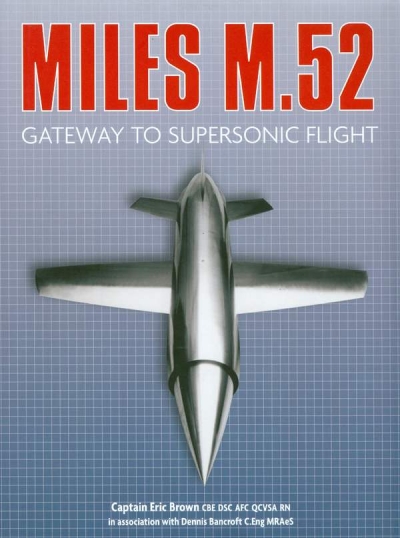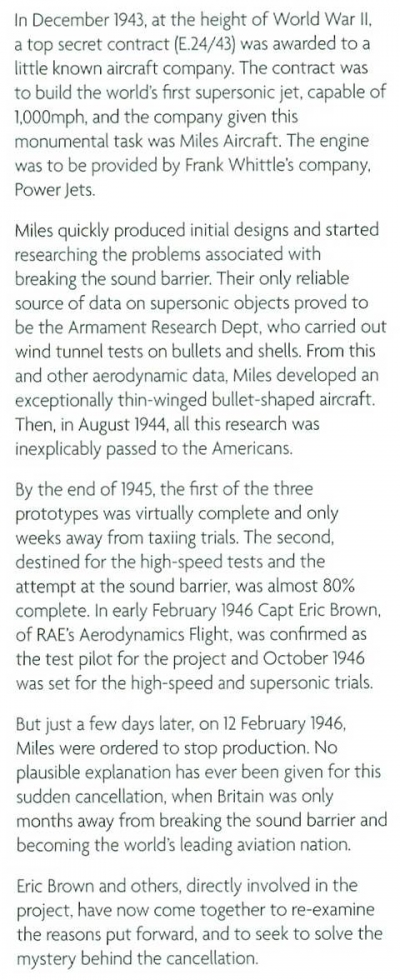Aircraft

Gateway to Supersonic Flight, numerous b&w illustrations from photographs, diagrams and line-drawings, reproductions of contemporary documents, extensive chronology, bibliography, index, 222 pp, black boards in d/w, front flap of d/w creased, otherwise in near fine condition, Spellmount (Stroud, Gloucestershire) 2013
22.4 x 15.7 cm, 710g, ISBN 978 0 75247 014 6
See the description below from the dustwrapper flap. While there seems little doubt that the M.52 would have broken the sound barrier and this book implies some kind of skulduggery around the cancellation of the project, the real reason may have been rather more prosaic. The M.52’s jet engine, the Whittle W.2/700, used a centrifugal compressor and reverse-flow combustion chambers. This meant that the air entering the engine had to turn through an astonishing 540 degrees before reaching the power turbine, which is scarcely ideal in an aircraft intended solely for high speed flight.
It is now clear that although the American Bell X-1, using a rocket engine, is credited with the first supersonic flight on 14 October 1947, the North American aircraft company was testing its new Sabre jet fighter – with swept wings – at the same time, and their aircraft may well have broken the sound barrier as early as the first week of October. The prototype Sabre used an Allison J35 engine, which employed axial flow (that is, the air passed straight through the engine) and developed 4,000lbs of thrust compared to the Whittle’s 2,500lbs.
It seems highly likely that the committee which cancelled the M.52 knew of the Sabre, its swept wings and its powerful axial-flow engine, and concluded that the Whittle engine and the M.52 were a blind alley. This would not be the first, or last, time that a project involving considerable national prestige had been cancelled for ‘implausible’ reasons. You will note that the Sabre became an excellent fighter, notably in the Korean War, and 9,860 of them were built before production ended in 1958.
The book is still available in hardback at £20.
